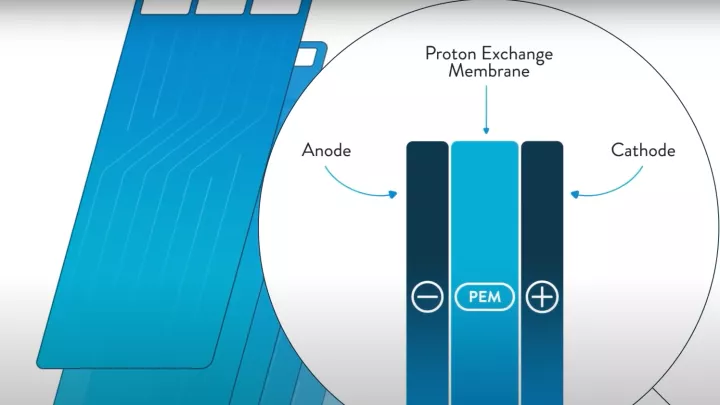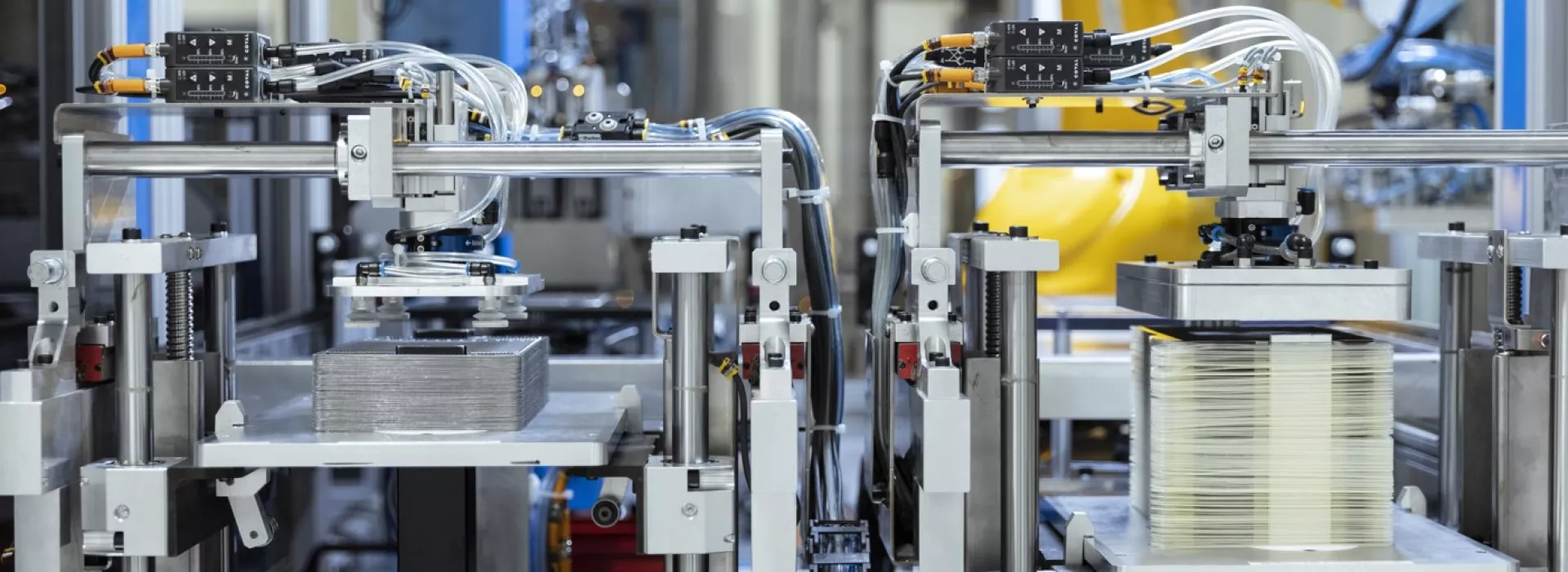Hydrogen Fuel Cell Technology
Hydrogen fuel cell: a zero-emission electric technology for mobility and stationary applications.
The hydrogen fuel cell transforms hydrogen and oxygen into electricity, emitting only water vapor — no CO₂. Hydrogen is an energy carrier, meaning it can store energy and release it later, when power is needed. Hydrogen fuel cell is the core technology developed by Symbio, suitable for:
- On-road mobility (trucks, vans, buses, coaches...),
- Off-road applications (construction and handling equipment...),
- Stationary uses (data centers, etc.).
✅ Key Benefits of Hydrogen Fuel Cells
- Zero emissions at use
- Versatile: on-road, off-road, stationary
- Enables storage of renewable energy
- High energy efficiency
- Quiet operation
- Reliable and durable
👉 Discover all fuel cell advantages here!
Find out more about our fuel cell specifications here
⚙️ How Does a Fuel Cell Work?
At the heart of hydrogen fuel cell technology is an electrochemical reaction between hydrogen and oxygen, generating electricity while releasing only water vapor and heat — hence the term “zero emission.”
There are several types of fuel cells. We use the Proton Exchange Membrane (PEM) fuel cell, which features a polymer membrane as its electrolyte.

🔄 Battery + Hydrogen: a high-performance hybrid
Combining a battery with a hydrogen fuel cell enhances the performance of electric vehicles — especially light commercial vehicles, which require long range, fast refueling, zero emissions, and no compromise on payload:
- Start-up & low speed: the battery powers the vehicle
- Cruising: the fuel cell supplies energy to the motor
- Acceleration: both sources work together
- Braking: the battery recharges


